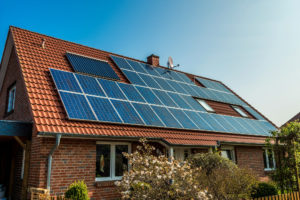Solar panels are the backbone of any solar energy system. To make informed decisions, understanding solar panel specifications is essential. In this article, we will delve into the intricacies of solar panel specifications, exploring power output, voltage, temperature coefficients, and more. Join us as we unlock the secrets of solar panel specifications to maximize your solar power potential.
Contents
Key Takeaways
- Understanding solar panel specifications is crucial for informed decision-making when selecting panels for your solar energy system.
- Key specifications include maximum power (Pmax), solar panel efficiency, temperature coefficient, and other electrical characteristics such as open circuit voltage (Voc) and short circuit current (Isc).
- Reading a solar panel specification sheet, considering practical aspects, and consulting professionals are essential for evaluating and choosing the right panels to optimize your solar system’s performance.
Understanding Solar Panel Basics
Solar Panel Components
To understand solar panel specifications, it’s crucial to grasp the components that make up a solar panel:
- Solar Cells: Solar cells are the heart of a solar panel. They are made of semiconductor materials, usually silicon, that convert sunlight into electricity through the photovoltaic effect.
- Glass: The front surface of a solar panel is covered with a durable, transparent glass sheet that protects the solar cells from external elements while allowing sunlight to pass through.
- Frame: The frame provides structural support and rigidity to the solar panel, protecting it from mechanical stresses and facilitating easy installation.
- Junction Box: The junction box is on the back of the solar panel and houses electrical connections. It protects the wiring and enables the panel to be connected to other panels or the electrical system of a building.
Solar Panel Working Principle
Solar panels generate electricity through the following process:
- Sunlight: When sunlight strikes the solar panel, it consists of photons (particles of light) that carry energy.
- Electron Excitation: The solar cells in the panel absorb photons, which excite electrons in the semiconductor material, freeing them from their atomic bonds.
- Electric Field: The freed electrons are guided by the electric field within the solar cells, creating a flow of electrons or current.
- Electrical Output: This flow of electrons forms a direct current (DC) that can be harnessed to power electrical devices or stored in batteries for later use.

The Role of Solar Panel Specifications
Solar panel specifications provide essential information about a panel’s performance, allowing users to assess its suitability for specific applications. These specifications are determined under standardized test conditions (STC), ensuring consistency and fair comparisons between different panels.
By studying solar panel specifications, users can make informed decisions based on power output, efficiency, and temperature performance. Understanding these specifications is crucial to selecting the right solar panel for a project or energy system.
Key Solar Panel Specifications
Understanding the key solar panel specifications will help evaluate and compare different panels effectively. Here are the primary specifications to consider:
Maximum Power (Pmax)
Pmax refers to a solar panel’s maximum power output under ideal conditions. It is measured in watts (W) and indicates the panel’s capacity to generate electricity. A higher Pmax value signifies a more powerful panel.
Solar Panel Efficiency
Solar panel efficiency measures how effectively the panel converts sunlight into electricity. It represents the ratio of the panel’s power output (Pmax) to the incoming solar energy (in watts per square meter). Higher efficiency panels generate more electricity from the same amount of sunlight.
Temperature Coefficient
The temperature coefficient indicates how a solar panel’s performance is affected by changes in temperature. It quantifies the change in the panel’s power output concerning changes in the cell temperature. A positive temperature coefficient indicates a reduction in performance as temperatures rise, while a negative coefficient signifies better performance in higher temperatures.
Other Electrical Specifications
Additional electrical specifications provide further insights into a solar panel’s characteristics:
- Open Circuit Voltage (Voc): The voltage output when no load is connected to the panel.
- Short Circuit Current (Isc): The current output when the panel is short-circuited.
- Maximum Voltage (Vmpp): The voltage at the panel’s maximum power point.
- Maximum Current (Impp): The current at the panel’s maximum power point.
These specifications help assess the panel’s electrical behavior under different conditions and facilitate system design and compatibility considerations.

Reading a Solar Panel Specification Sheet
A solar panel specification sheet provides comprehensive details about a panel’s performance and characteristics. When reading a specification sheet, consider the following:
- Manufacturer and Model: Identify the manufacturer and model of the solar panel, as different models may have varying specifications and performance.
- Electrical Specifications: Pay attention to the values provided for Pmax, efficiency, temperature coefficient, Voc, Isc, Vmpp, and Impp. These values determine the panel’s power output, performance in different temperatures, and compatibility with the electrical system.
- Physical Dimensions: Note the panel’s dimensions, weight, and frame type. These details are essential for installation planning and ensuring compatibility with mounting systems.
- Certifications and Standards: Check for relevant certifications, such as IEC, UL, or TÜV, which validate the panel’s compliance with industry standards and safety regulations.
- Warranty Information: Review the warranty terms and conditions, including the duration and coverage, to ensure adequate protection for your investment.
By understanding the information in a solar panel specification sheet, you can make more informed decisions when selecting the right panels for your solar energy system.
Practical Considerations
In addition to solar panel specifications, several practical considerations should be taken into account:
- Solar System Compatibility: Ensure the selected panel is compatible with your solar system setup, including the inverter, wiring, and other system components. Consulting with a solar professional can help ensure compatibility and optimize system performance.
- Warranty and Manufacturer Reputation: Evaluate the manufacturer’s reputation and the warranty provided for the solar panel. A reputable manufacturer with a solid track record and a comprehensive warranty will offer greater peace of mind and long-term support.
- Charge Controller Compatibility: If the solar panel is intended for use with batteries or an off-grid system, ensure compatibility with a suitable solar charge controller. The charge controller regulates the charging process and safeguards the batteries from overcharging or excessive discharge.
- Data Sheet Analysis: Refer to the panel’s datasheet, which provides detailed technical information beyond the specification sheet. Analyzing this information can provide further insights into the panel’s performance, materials used, and environmental ratings.
By considering these practical aspects in conjunction with solar panel specifications, you can make well-rounded decisions and ensure your solar energy system’s optimal performance and longevity.
Experience Solar Excellence with Us!
Trust in Solar Panels Network USA, where our seasoned experts deliver top-quality solar solutions for homes and businesses nationwide. With a legacy of countless successful installations and a commitment to sustainable energy, we’re your reliable partner in the solar journey. Ready for a brighter, eco-friendly future? Call us now at (855) 427-0058 and harness the power of the sun!
Conclusion
Understanding solar panel specifications empowers you to make informed decisions when choosing panels for your solar energy system. You can optimize your solar system’s performance by carefully analyzing power output, voltage, temperature coefficients, and other relevant specifications. Remember to refer to the datasheet provided by manufacturers and seek professional advice to ensure your solar panels meet your specific needs.
FAQ
How do you read solar panel specifications?
Reading solar panel specifications involves understanding the key parameters in the specification sheet. These parameters include maximum power (Pmax), solar panel efficiency, temperature coefficient, and other electrical characteristics like open circuit voltage (Voc) and short circuit current (Isc). By interpreting these values and their significance, you can assess the performance and suitability of a solar panel for your specific requirements.
What do the specs mean in a solar panel?
The specifications of a solar panel provide crucial information about its performance, electrical characteristics, and physical dimensions. The specs, such as maximum power (Pmax), efficiency, temperature coefficient, open circuit voltage (Voc), short circuit current (Isc), and others, give insights into a panel’s power output, efficiency, temperature performance, and compatibility with the electrical system. Understanding these specs helps in evaluating and comparing different solar panels.
How do I know the kW of my solar panels?
To determine your solar panels’ kilowatt (kW) capacity, consider their power output. The power output, usually indicated as maximum power (Pmax) in watts (W) in the solar panel specification, represents the peak capacity of the panel. To convert this value to kilowatts, divide the wattage by 1,000. For example, a solar panel with a maximum power output of 300W will have a capacity of 0.3 kW (300W ÷ 1,000 = 0.3 kW). To determine the total kW capacity of your solar panels, add the capacities of all the panels in your system.
About the Author
Solar Panels Network USA stands at the forefront of solar energy solutions, driven by a team of seasoned solar engineers and energy consultants. With over decades of experience in delivering high-quality solar installations and maintenance, we are committed to promoting sustainable energy through customer-centric, tailored solutions. Our articles reflect this commitment, crafted collaboratively by experts to provide accurate, up-to-date insights into solar technology, ensuring our readers are well-informed and empowered in their solar energy decisions.

